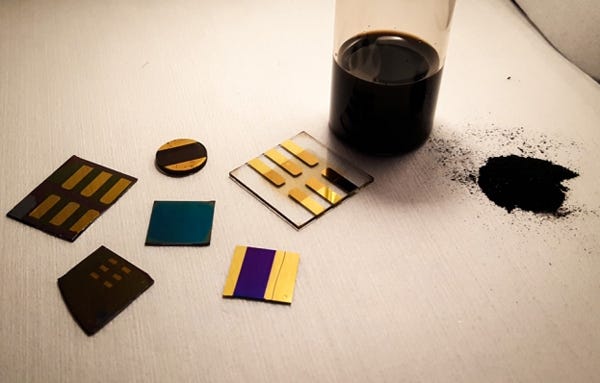Is Coal the Future for Electronic Devices?
April 27, 2016
Research at MIT suggests that the unique properties of coal could be used as the material basis for a new generation of batteries, solar panels, and other electronic devices--including in the medical device field.
Kristopher Sturgis
For decades coal has been a valuable resource that, despite its rich chemical properties, has largely been burned for the purposes of producing electricity and heat. Recently, a group of scientists from MIT set out to prove that we may have been underestimating the abilities of this combustible sedimentary rock.
A recent demonstration led by Jeffrey Grossman, professor of materials science and engineering at MIT, showed that there could be a variety of different high-tech uses for coal that take advantage of coal's somewhat unique chemical, electrical, and optical properties. The group has successfully created a simple electrical heating device with potential applications in window defrosting, which could also be used to defrost the wings of an airplane. Their research has focused on four different thin films of coal: anthracite, lignite, and two separate bituminous types of coal.
Grossman told MIT news that when the group decided to explore coal as a material, rather than just something to burn, the chemical properties of the material were surprisingly quite rich. This discovery sparked an interesting question--could the unique chemical properties of coal be used to make electronic devices with useful functionality?
Despite coal being widely used for centuries, its electronic and optical properties have been largely unexplored for potential electronic device applications. As such, the group's first challenge was to find a way to process the material into thin strips, so it could be used in electronic devices like transistors and photovoltaics.
The heating device created by the team now serves as a proof of principle that demonstrates how to transform the material into thin strips that can be used to form a functional electronic device. The group believes that the low cost of coal could be its biggest advantage as a material, as well as low fabrication costs.
Many electronics these days are made from chip-grade silicon or graphene, both of which can be very costly when it comes to the purification of materials. Powdered coal could not only prove a cheap substitute, but could also offer other chemical property advantages, such as its high conductivity and thermal stability.
When it comes to creating new innovative technologies, exploring new materials is often the catalyst of discovery. Just last week researchers from Stanford University combined an elastomer with metal ions to form a new substance that could be used in a self-healing artificial muscle. Exploring new material applications can be vital to discovering new innovative solutions--a sentiment that Grossman and his colleagues remain well aware of as they explore a myriad of different electronic applications for coal.
The group believes the substance could serve as the basis for a whole new generation of electronic devices, most notably solar panels, batteries, and electric heating devices. They even hope to incorporate coal into biomedical implants, and possibly sensor technologies that can utilize the material's electronic and optical properties.
"Currently we designed passive electronic devices, such as heaters, but our goal is to make active devices which rely on the knowledge of how different coals can be combined to effectively enable logic (such as transistors) or charge generation (such as solar cells). This is our current research objective," says Nicola Ferralis, research scientist for the Grossman Group at MIT. Ferralis also noted that the research group has not explored the bio-compatibility of the coal-based devices so far.
Grossman believes this study could lay the groundwork for the utilization of nanocarbon materials directly from unrefined coal, resulting in a material with controllable electronic properties that could enhance a new generation of electronic devices. Grossman and his colleagues recently published their findings in the journal NanoLetters, and hope that with continued research, coal could become more than just a resource to burn through.
Check out more medtech-related electronics advances>>
Learn more about cutting-edge medical devices at MD&M East, June 14-15, 2016 in New York City. |
Kristopher Sturgis is a contributor to Qmed and MPMN.
Like what you're reading? Subscribe to our daily e-newsletter.
About the Author(s)
You May Also Like





.png?width=300&auto=webp&quality=80&disable=upscale)